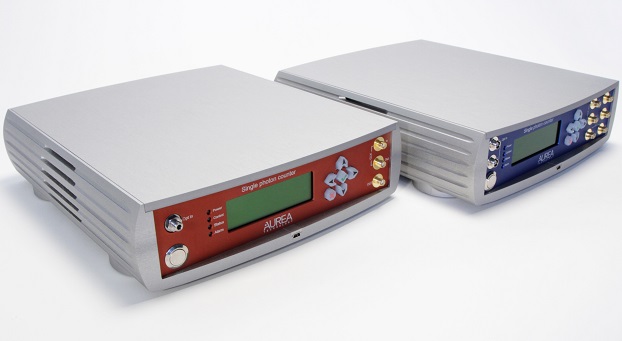[San Francisco, February 1st, 2014] AUREA Technology the leading manufacturer of high-performance optical instruments has added the visible [400 nm to 1060 nm] wavelength range to its Near Infrared [900 nm to 1,700 nm] high-performance Photon Counting products line. Its unique and proprietary SPD_A module allows the integration and the combination of the “best-in-class” Silicon and InGaAs Single Photon Avalanche Photodiode (SPAD) technologies up to two channels per box. Engineered with “high performance, and ease-of-use” innovative mindset, the SPD_A series provide, not only the world’s most advanced SPAD technologies (very-low-noise and high QE), but also the most efficient integrated cooling systems, the latest fast data processing and the most intuitive and practical user interfaces.
Moreover, by integrating picosecond resolution Time-to-Digital Converter (TDC), the LynXea series provide Time-Correlated Single Photon Counting for also the visible and near-infrared range. From February 2014, AUREA Technology is offering the most complete and high-performance visible, near-infrared and large-band Single Photon Counting module solutions.
You can see the newly designed AUREA Technology’s visible and near-infrared photon counting at booth 1123-D at the Photonics West exhibition in San Francisco, February 4-6 2014.
About AUREA Technology
AUREA Technology designs and manufactures a new generation of high performance and easy-to-use Single Photon Counting Modules that enable worldwide scientists and engineers to measure very low light level down to a single photon. This superior photon detection allows them to achieve outstanding results, and remain at the cutting edge of their field. As a leading maker of innovative optical instruments, AUREA Technology provides the “best in class” Single Photon Counting Module and also the first “all-in-one” Time Correlated Single Photon Counting TCSPC Module. AUREA Technology works closely with its scientific and industrial customers to meet the photon counting challenges of today and tomorrow in the biotechnology, nanotechnology, life sciences, optical networking, bio-medical, environmental and aeronautics industries.
More information at:















